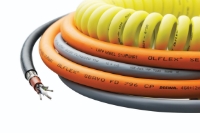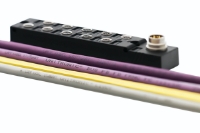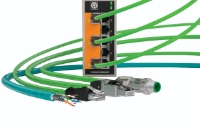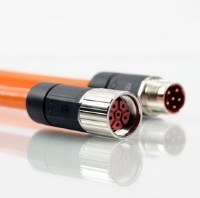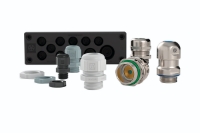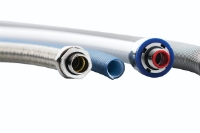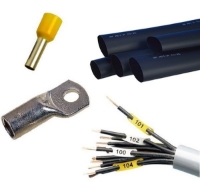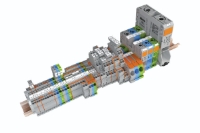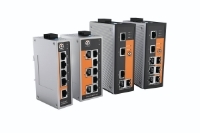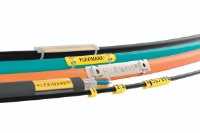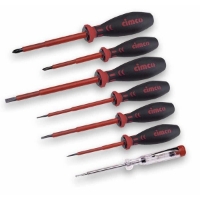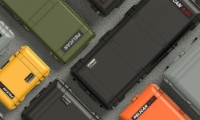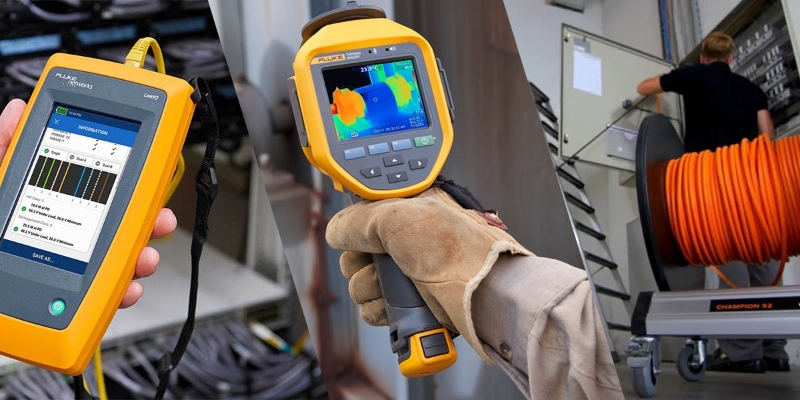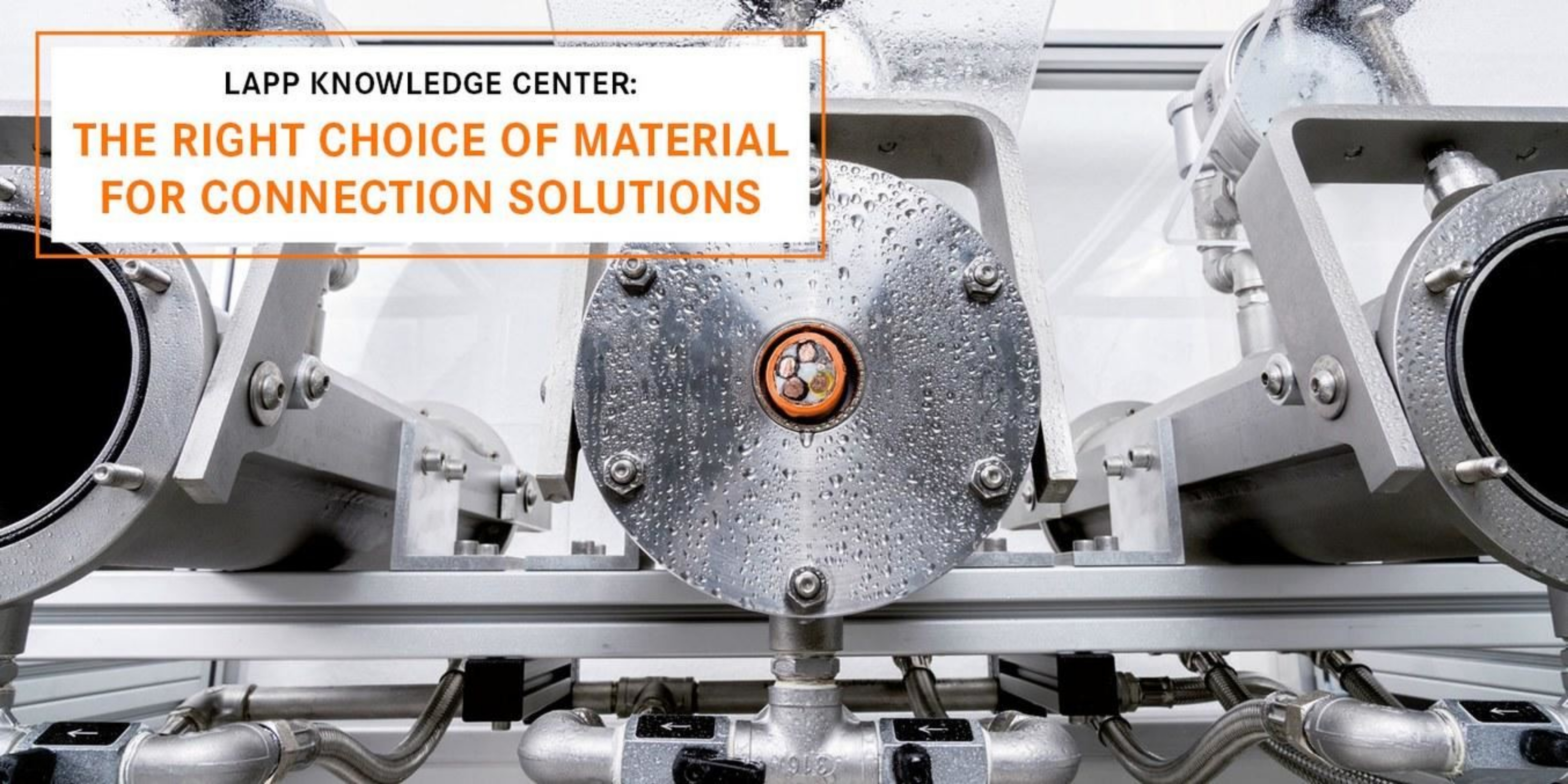Selecting The right choice of material for connection systems
There are many differences in the materials with advantages and disadvantages depending on the application. Therefore, one should know exactly which attributes of a material are most suitable.
Designers involved in the design of cables should therefore take their time and rely on the know-how of an experienced manufacturer such as LAPP. Because every connection solution is only as strong as its weakest component - and that is often an unsuitable material.
Fire hazard: Flame-retardant insulation material
The simplest way for good flame retardancy is to add halogens to the plastic. Few additives are required for this, and the mechanical properties are only slightly impaired. However, halogens have one major disadvantage that they form toxic smoke gases in the event of a fire, which combine with extinguishing water to form corrosive vapours.
An alternative is HFFR plastics (Halogen Free Flame Retardant), which are toxic and harmless, but require a filling level of up to 60 percent and can impair the mechanical properties of the plastic. So-called synergists, which together provide better flame retardancy than either of the two starting materials alone, are therefore a new trend. For example, a synergist consisting of halogen-free aluminium trihydrate and silane compounds could be considered. Aluminium trihydrate reacts with fire to form aluminium oxide and water; an endothermic reaction that withdraws energy from the fire. It also forms a crust of burnt material that serves as a protective layer.
In case of environmental influences: Protective jacket
Depending on the application, pipes must be immune to lubricating oil, grease or cleaning agents. For mechanical engineering there are now proven cables with sheaths made of polyvinyl chloride or polyurethane (PVC). PVC is the workhorse of jacket materials. However, processing is difficult because the jacket is difficult to cut. PUR is also flammable and expensive. The cable types ÖLFLEX® 408P and ÖLFLEX® 409P, which have a PVC outer sheath and a gusset-filling functional PVC layer, are an example of a compromise that combines the high resistance of PUR with the simple processing of PVC.
The food and beverage industry are interested in resistance to biological influences such as microbes and fungi. On the other hand, there are sheath materials made of special TPE, such as the ROBUST cables from LAPP, on which microbes hardly find a foothold and which are easy to clean. The secret of LAPP's special thermoplastic elastomer is its smooth surface thanks to a sophisticated mixture of additives that fill microscopic gaps in the material and remain bound in the plastic matrix even during intensive cleaning with a steam jet.
Stainless steel - yes, but...
Stainless steel is the material of choice when system products need to withstand chemicals or detergents. Especially in the food and beverage industry there is often no way around stainless steel. It does not rust and there is no coating that could flake off at some point. But here, too, there are differences. The food and beverage industry like to use hypochlorous acid, which decomposes to hydrochloric acid and kills organic substances. Common V2A stainless steel is attacked by hypochlorous acid and is therefore not ideal. For such cases, V4A is a more resistant alloy. It is extremely tough, and resists impacts or cleaning with hard brushes.
However, stainless steel is also very difficult to process. This is especially true for V4A. If the surface is untreated, V4A is rough and the friction is high. LAPP subjects its V4A stainless steel products, such as the EHEDG-certified SKINTOP® HYGIENIC cable gland, to a special surface treatment that reduces friction. A low surface roughness is therefore important to ensure problem-free and complete cleaning.
Stainless steel is out of the question for rectangular connectors because the hardness of the metal means that it cannot be processed sensibly. LAPP has therefore taken a different approach with the EPIC® ULTRA: The housing of the rectangular plug is made of nickel-plated die-cast zinc. This material is corrosion-resistant, for example the salt mist on an oil drilling platform environment or in the food and beverage industry.
Rubber keeps tight
Where metal meets metal - for example a plug connector meets a switch cabinet - there is usually a seal. In terms of temperature and media resistance, it must have properties comparable to those of the materials used for the other components of the connectors or screw connections, otherwise it becomes a weak link in the chain. One (almost) all-rounder is fluorocarbon rubber (FCM). It is resistant to weathering, ageing and ozone, as well as chemicals, and holds its own against the elements. It is resistant to weathering, ageing, ozone and chemicals and can withstand temperatures of up to 200 degrees Celsius. If the ambient conditions are moderate, ethylene-propylene-diene rubber (EPDM) is also a good alternative. FCM has a small disadvantage: it is not suitable for very cold environments; it should not be used below minus 20 degrees. Silicone is more suitable for cold stores or other very cold environments.
Sometimes there is no silver bullet that clearly indicates which material is best. Just weighing up all the advantages and disadvantages. We at LAPP know our products very well and should always be consulted before you decide on a - possibly unsuitable - variant.
Contact the LAPP technical team for assistance in selecting the right product for your application.

